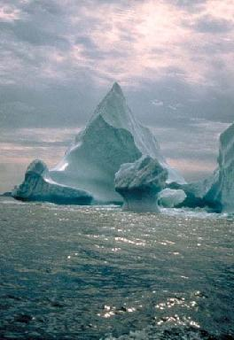NOAA/WDS Paleoclimatology - Oppo et al. 2006 North Atlantic ODP980 MIS5 Sediment Data
This archived Paleoclimatology Study is available from the NOAA National Centers for Environmental Information (NCEI), under the World Data Service (WDS) for Paleoclimatology. The associated NCEI study type is Paleoceanography. The data include parameters of paleoceanography with a geographic location of North Atlantic Ocean. The time period coverage is from 150052 to 60044 in calendar years before present (BP). See metadata information for parameter and study location details. Please cite this study when using the data.
Dataset Citation
- Cite as: Oppo, D.W.; McManus, J.F.; Cullen, J.L. (2008-02-01): NOAA/WDS Paleoclimatology - Oppo et al. 2006 North Atlantic ODP980 MIS5 Sediment Data. [indicate subset used]. NOAA National Centers for Environmental Information. https://doi.org/10.25921/dtsw-wt61. Accessed [date].
- Please refer to Credit tab for full citation information.
Dataset Identifiers
- doi:10.25921/dtsw-wt61
- noaa-ocean-5962
- NCEI DSI 1200_02
- NCEI DSI 1200_01
ISO 19115-2 Metadata
noaa-ocean-5962
| Search Data |
|
| Download Data |
|
| Distribution Formats |
|
| Ordering Instructions | Contact NCEI for other distribution options and instructions. |
| Distributor |
NOAA National Centers for Environmental Information ncei.info@noaa.gov |
| Dataset Point of Contact |
NOAA National Centers for Environmental Information ncei.info@noaa.gov |
| Dataset Point of Contact | Data Center Contact NOAA World Data Service for Paleoclimatology 828-271-4800 paleo@noaa.gov |
| Coverage Description | Date Range: 150052 cal yr BP to 60044 cal yr BP; |
| Time Period | -148102 to -58094 |
| Spatial Bounding Box Coordinates |
West: -14.7
East: -14.7
South: 55.48
North: 55.48
|
| Spatial Coverage Map |
| General Documentation |
|
| Associated Resources |
|
| Publication Dates |
|
| Data Presentation Form | Digital table - digital representation of facts or figures systematically displayed, especially in columns |
| Dataset Progress Status | Complete - production of the data has been completed |
| Data Update Frequency | Data update frequency not available |
| Supplemental Information | STUDY NOTES: High resolution faunal, isotopic, and lithic marine records and SST reconstruction from North Atlantic core ODP 980 (55 29'N, 14 42'W, 2169 m depth) over the last interglacial period, Marine Isotope Stage 5, ~125,000 years before present. ABSTRACT SUPPLIED BY ORIGINATOR: Detailed faunal, isotopic, and lithic marine records provide new insight into the stability and climate progression of the last interglacial period, Marine Isotope Stage (MIS) 5, which peaked approximately 125,000 years ago. In the eastern subpolar North Atlantic, at the latitude of Ireland, interglacial warmth of the ice volume minimum of substage 5e (MIS 5e) lasted ~10,000 years (10 ka) and its demise occurred in two cooling steps. The first cooling step marked the end of the climatic optimum, which was 2-3 ka long. Minor ice rafting accompanied each cooling step; the second, larger, step encompassing cold events C26 and C25 was previously identified in the northwestern Atlantic. Approximately 4C of cooling occurred between peak interglacial warmth and C25, and the region experienced an additional temporary cooling of at least 1-2C during C24, a cooling event associated with widespread ice rafting in the North Atlantic. Beginning with C24, MIS 5 was characterized by oscillations of at least 1-2C superimposed on a generally cool baseline. The results of this study imply that the marine climatic optimum of the last interglacial was shorter than previously thought. The finding that the eastern subpolar North Atlantic cooled significantly before C24 reconciles terrestrial evidence for progressive climate deterioration at similar and lower latitudes with marine conditions. Our results also demonstrate a close association between modest ice rafting, cooling, and deep ocean circulation even during the peak of MIS 5e and in the earliest stages of ice growth. |
| Purpose | Records of past climate and ocean circulation derived from marine sediments. Parameter keywords describe what was measured in this dataset. Additional summary information can be found in the abstracts of papers listed in the dataset citations. |
| Dataset Citation |
|
| Cited Authors |
|
| Originators |
|
| Publishers |
|
| Theme keywords |
Global Change Master Directory (GCMD) Science Keywords
|
| Data Center keywords |
Global Change Master Directory (GCMD) Data Center Keywords
|
| Place keywords |
|
| Use Constraints |
|
| Access Constraints |
|
| Fees |
|
Last Modified: 2023-10-24
For questions about the information on this page, please email: ncei.info@noaa.gov
For questions about the information on this page, please email: ncei.info@noaa.gov

